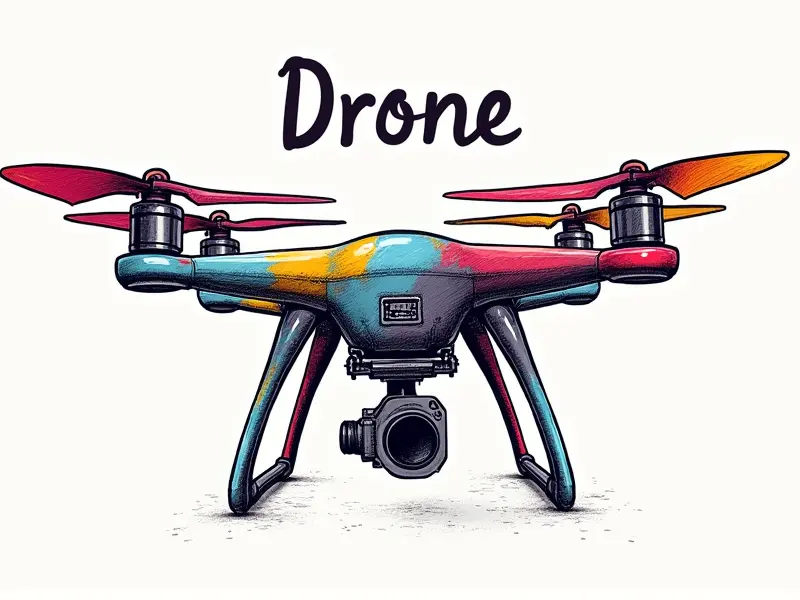How to make a RC helicopter fly?

Mastering RC Helicopter Flight Basics
Flying a remote-controlled (RC) helicopter is an exhilarating hobby that requires patience, practice, and the right techniques. Before you take off, it's essential to understand the basics of how an RC helicopter works and what components are involved.
Understanding the Components
- Main Rotor: The main rotor is responsible for lift and forward movement.
- Tail Rotor: This counteracts the torque from the main rotor, preventing the helicopter from spinning uncontrollably.
- Electronic Speed Controller (ESC): Controls the speed of the motor based on your input signals.
- Battery Pack: Provides power to the ESC and other electronic components.
- Receiver: Receives control signals from your transmitter.
- Transmitter: Sends commands to the receiver, controlling the helicopter's movements.
Beginner's Guide to RC Helicopter Control
Controlling an RC helicopter can be intimidating at first, but with practice and patience, you'll soon become proficient. Here’s a step-by-step guide to help you get started:
Getting Familiar with the Transmitter
- Main Stick (Cyclic): Controls pitch and roll.
- Collective Stick: Adjusts lift and altitude.
- Tail Rotor Control: Manages yaw or heading control.
- Throttle: Regulates the power output of the motor.
Basic Flight Commands
- Lift Off: Increase throttle while adjusting collective stick to gain altitude.
- Holding Hover: Balance pitch, roll, and yaw to maintain a steady position.
- Moving Forward/Backward: Adjust the cyclic stick forward or backward for movement.
Tips for First-Time RC Helicopter Flyers
Starting out with an RC helicopter can be challenging, but these tips will help you get off to a smooth start:
Choose the Right Model
- Select a beginner-friendly model designed specifically for novices.
- Avoid complex models until you have mastered basic flight skills.
Practice Indoors First
Flying indoors in a spacious area can help you build confidence without the risk of losing your helicopter to wind or obstacles.
Essential Skills for RC Helicopter Pilots
To become proficient at flying an RC helicopter, certain skills are crucial:
Spatial Awareness
- Understanding Orientation: Always know which direction your helicopter is facing.
- Distance Perception: Accurately judge distances to avoid collisions.
Motor Control
Smooth and precise control of the motor ensures stable flight. Practice adjusting throttle smoothly without sudden jerks.
How to Hover an RC Helicopter Perfectly
Holding a hover is one of the most challenging aspects of flying an RC helicopter, but it’s also essential for mastering more advanced maneuvers:
Balancing Forces
- Pitch and Roll: Adjust cyclic stick to balance forward/backward and side-to-side movements.
- Yaw Control: Manage tail rotor control to prevent unwanted rotation.
Using Feedback Loops
Constantly monitor your helicopter's position relative to the ground and make small, incremental adjustments as needed.
Tricks for Smooth RC Helicopter Flight
Maintaining smooth flight is key to performing advanced maneuvers. Here are some tips:
Smooth Throttle Adjustments
- Avoid sudden changes in throttle; instead, make gradual adjustments.
- Practice maintaining a steady altitude by balancing lift and descent smoothly.
Precision Control
Fine-tune your control inputs to achieve precise movements. This involves making subtle adjustments rather than large, abrupt ones.
RC Helicopter Flying Techniques Explained
To enhance your flying skills, understanding various techniques is essential:
Landing Techniques
- Glide Landing: Gradually reduce throttle to land smoothly without crashing.
- Belly Landings: If a crash seems inevitable, perform a controlled belly landing to minimize damage.
Aerobatic Maneuvers
- Inverted Flight: Master the technique of flying upside down for impressive aerial displays.
- Rolls and Looping: Perform rolls and loops to add flair to your flight routine.
Mastering the Art of RC Helicopter Control
Becoming an expert in RC helicopter control requires dedication, practice, and a willingness to learn from mistakes. Here are some advanced tips:
Advanced Maneuvers Practice
- Helicopter Aerobatics: Focus on mastering aerobatic maneuvers like rolls, loops, and inverted flight.
- Dynamic Flight Control: Learn to control your helicopter dynamically in real-time for more complex flights.
Continuous Learning
Stay updated with the latest techniques and technologies by joining RC communities and forums. Continuous learning will help you stay ahead of the curve.
Quick Start Guide: Flying RC Helicopters Smoothly
If you're eager to start flying your RC helicopter smoothly, follow these quick tips:
Pre-Flight Checklist
- Battery Check: Ensure the battery is fully charged.
- Component Inspection: Verify all components are securely attached and functioning properly.
Flying Techniques Recap
Review basic flying techniques such as hover control, smooth throttle adjustments, and precise pitch and roll movements.
Beginner's Guide to RC Helicopter Flight
This guide provides a comprehensive overview of the essentials for beginners:
Fundamentals Recap
- Understanding Components: Familiarize yourself with all parts and their functions.
- Control Basics: Learn how to use your transmitter effectively.
Practice Tips
Consistent practice in a safe environment is key. Start indoors before moving on to outdoor flights.
Conclusion: RC Helicopter Flying Mastery
Mastery of RC helicopter flying comes with time, patience, and dedication. By following these tips and continuously practicing, you'll soon be performing advanced maneuvers with ease.
By adhering to these guidelines and continually honing your skills, you’ll become a proficient RC helicopter pilot capable of executing both basic and complex maneuvers with confidence.

